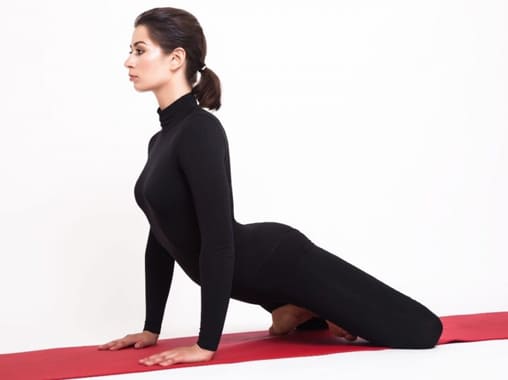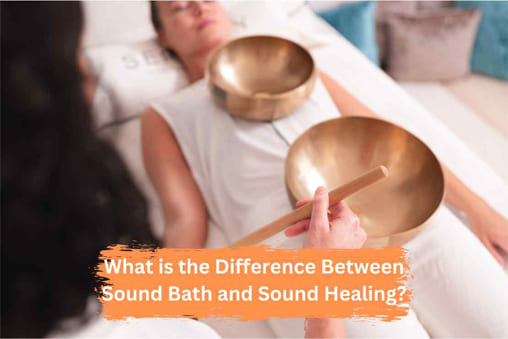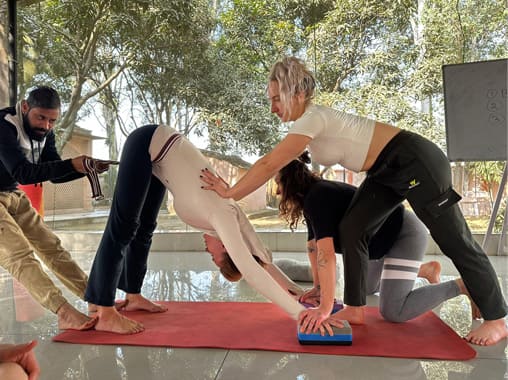Introduction
For decades, people have been using Neti Kriya, a powerful yoga technique, to clear their sinuses and detoxify their nasal passages. Jal Neti, or Neti Kriya, literally means “nasal cleansing.” It’s an easy process that involves using salt water or a saline solution to cleanse your nasal passages. The solution is to pour out one nostril and drain the other using a neti pot, a little teapot-shaped container. Mucus, allergens, and irritants that might cause nasal congestion and inflammation are reduced by this procedure.

Is There Proof of Neti Kriya and Sinusitis in Science?
Although little study has been done on Neti Kriya for sinusitis, certain studies point to possible advantages. According to a 2010 review, Neti Kriya and other nasal irrigation techniques could be beneficial for persistent sinusitis. Furthermore, Neti Kriya was found to be equally efficient as nasal corticosteroids in easing the symptoms of acute rhinosinusitis, a common cold with sinus involvement.
Benefits of Jal Neti Kriya
- Cleaning the nasal passages: One of Jal Neti’s main advantages is its capacity to rid the nasal passages of mucus, allergies, and other pollutants. Jal Neti releases irritants and impurities, which relieve congestion and facilitate better breathing. This can be very helpful for those with allergies, sinusitis, and other respiratory disorders..
- Strengthens the Respiratory System: Regular Jal Neti practice strengthens the respiratory system by increasing airflow via the nasal passages. By increasing lung capacity and encouraging deeper breathing, Jal Neti may facilitate more accessible and more comfortable breathing for those with asthma, bronchitis, and other respiratory conditions.
- Prevents Infections: By eliminating bacteria, viruses, and other pathogens, Jal Neti helps keep the ears, eyes, and nasal passages free of infections. By preserving a hygienic and clean nasal environment, Jal Neti lessens the likelihood of sinus infections, colds, and other respiratory ailments. This can be particularly helpful in areas with high pollution levels or during the cold and flu seasons.
- Relieves Migraines: Jal Neti can relieve migraine patients by removing extra heat from the head and chilling the brain. Jal Neti has the potential to mitigate migraine symptoms and avert further episodes by encouraging relaxation and lowering tension in the head and neck muscles.
Methods for Doing Jal Neti Kriya
Step 1: Get the Neti Pot ready:
To perform Jal Neti, you will need a Neti pot, non-iodized salt, and lukewarm water. To make a saline solution, fill the neti pot with lukewarm water and sprinkle with salt. Stir the water to dissolve the salt completely.
Step 2: Place Yourself:
Tilt your head slightly forward and to the side when standing over a sink or in a comfortable posture. Raise one nostril over the other by tilting your head.
Step 3: Insert the Nozzle:
Carefully slide the net pot’s nozzle into the upper nose to form a tight seal that will stop leaks. Throughout the procedure, keep your lips open to breathe.
Step 4: Pour the Water:
Gently fill your nostril with the saline solution, letting it trickle through your nasal passages and out the other. Breathe through your mouth to keep the water from getting in your throat as it pours.
Step 5: Repeat on the Other Side:
After emptying half of the neti pot, move to the other nostril to completely clear both nasal passageways.
Conclusion
After using the neti pot, drain any leftover water and wash it quickly with soap and water. Let the pot air dry completely before putting it away. Gargling with salt water might improve sinus relief even more than Jal Neti. You can relieve sore throats, lessen inflammation, and avoid oral and throat infections by gargling with salt water. Just gargle for thirty to sixty seconds after adding a little salt to a glass of lukewarm water, and then spit out the water.
Jal Neti is a straightforward yet efficient technique for enhancing respiratory health and sinus relief. Implementing this age-old yogic method into your everyday routine may help you enjoy better breathing, fewer sinus infections, and an overall sense of well-being.





